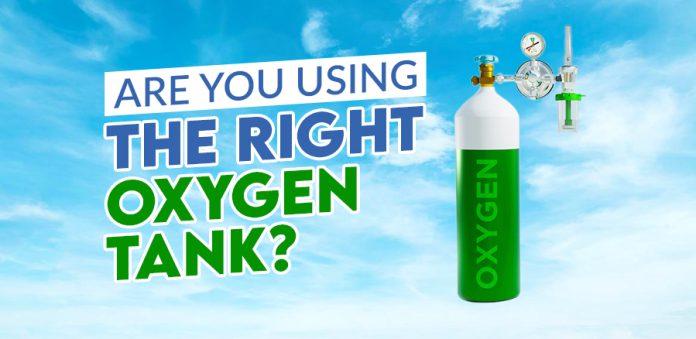If you or a loved one needs an oxygen tank, it’s crucial to be aware of the proper regulatory standards and certifications. This ensures that the tank and cylinder meet quality requirements and pose no risks to the user. So, let’s dive into the essential information you need to know.
Do I Need a Certification or Regulatory Approval for My Oxygen Tank?
Let’s be real, no one wants to be caught without oxygen, whether it’s due to a medical condition or high-altitude travel. But, before you go out and buy an oxygen tank, it’s important to understand the regulatory standards and certifications required for your specific use case. FDA and FAA both have certain standards that an oxygen cylinder must uphold. Ultimately these standards make the oxygen tanks safer for use by everyone involved. A damaged oxygen cylinder might as well be dealt with like a ticking time bomb.
Medical Grade Oxygen Tank Regulations
For medical-grade oxygen tanks, some strict standards and certifications must be met to ensure safety and quality. The US Food and Drug Administration (FDA) requires that all medical-grade oxygen tanks meet specific criteria, including purity levels and pressure requirements.
Additionally, the tanks must be properly labeled with information such as the expiration date and lot number.
Portable Oxygen is Strictly Monitored
If you need a portable oxygen tank, there are regulatory approvals that must be met. This includes the FAA’s requirements for the use of portable oxygen tanks on flights. The tank must be labeled with specific information and meet certain pressure limits to ensure safe use onboard the aircraft. For those using oxygen tanks in aviation, there are additional requirements that must be met.
The FAA requires that all oxygen systems be subject to rigorous testing and inspections to ensure that they meet safety requirements before being approved for use. Medical-grade oxygen cylinders utilized during air travel must comply with particular regulations, as specified in Title 49 of the Code of Federal Regulations (49 CFR) Part 173. These regulations pertain to the transportation of compressed gases and encompass various aspects such as the design, construction, testing, labeling, and documentation requirements for the cylinders.
Check Your Oxygen Tanks Yourself Too!
When purchasing an oxygen tank, it’s important to ensure that the tank and cylinder meet quality requirements and that warning signs of a faulty or damaged tank are recognized. This includes checking for any leaks or damages to the tank itself, as well as the cylinder and valve.
In summary, understanding the regulatory standards and certifications required for your oxygen tank is essential. Whether you need a medical-grade oxygen tank, a portable tank for travel, or an aviation oxygen system, be sure to do your research and purchase a tank that meets all necessary standards and certifications to ensure your safety.
Different Types of Oxygen Tanks
Different types of oxygen tanks There are various types of oxygen tanks available in the market that cater to different needs.
Compressed Gas Oxygen Cylinders
These are the most commonly used in medical settings. They contain compressed oxygen gas and are available in different sizes. When it comes to portability, portable oxygen tanks are designed to be smaller and lighter, making them easy to carry around. However, stationary oxygen tanks offer a continuous supply of oxygen without the need to refill the tank.
Liquid Oxygen Cylinders
Liquid oxygen tanks, on the other hand, store oxygen in a liquid form, which provides higher purity levels and fewer refills than compressed gas cylinders. However, they require specialized equipment to prevent leaks and spills.
It is important to consider your specific needs before purchasing an oxygen tank. Are you going to be using it on the go or at home? What is the level of purity that you require?
Taking these factors into account before making a purchase will ensure that you choose the right type of oxygen tank for your needs.
How to Ensure Safety and Quality When Buying Oxygen Tanks?
When buying an oxygen tank, safety and quality should be your top priorities. You need to consider a few things to ensure that you get the best product.
A Trusted Supplier or Manufacturer of Oxygen Tanks
Firstly, make sure you buy from a reputable supplier. Do some research to find out which suppliers have a good track record in the industry. We suggest you check out oxygen cylinders available on Sanai Health’s website. They have a pretty secure design and product components
Check Your Oxygen Tank For Visible Damage
Secondly, ensure that the tank and cylinder are of high quality. Check the manufacturing and expiry dates, and look for any signs of wear and tear. Ensure that the tank is properly labeled with the required information. Lastly, recognize warning signs of a faulty or damaged tank. These may include leaking gas, cracks, or dents.
If you notice any of these warning signs, do not use the tank and immediately contact the supplier. It is crucial to ensure that you buy a good quality oxygen tank as it can be a matter of life and death. Remember, safety first!
Conclusion
To sum up, adhering to regulatory standards and certifications for oxygen tanks and cylinders is critical to ensure safety and quality. Buy your oxygen tanks from manufacturers that have experience in this field like Sanai Health. You can check their website to find out more about their oxygen tanks.
Medical-grade oxygen tanks require specific certifications, while portable tanks need regulatory approvals. Liquid oxygen tanks have separate requirements, and it’s essential to recognize warning signs of a faulty or damaged tank. When purchasing
